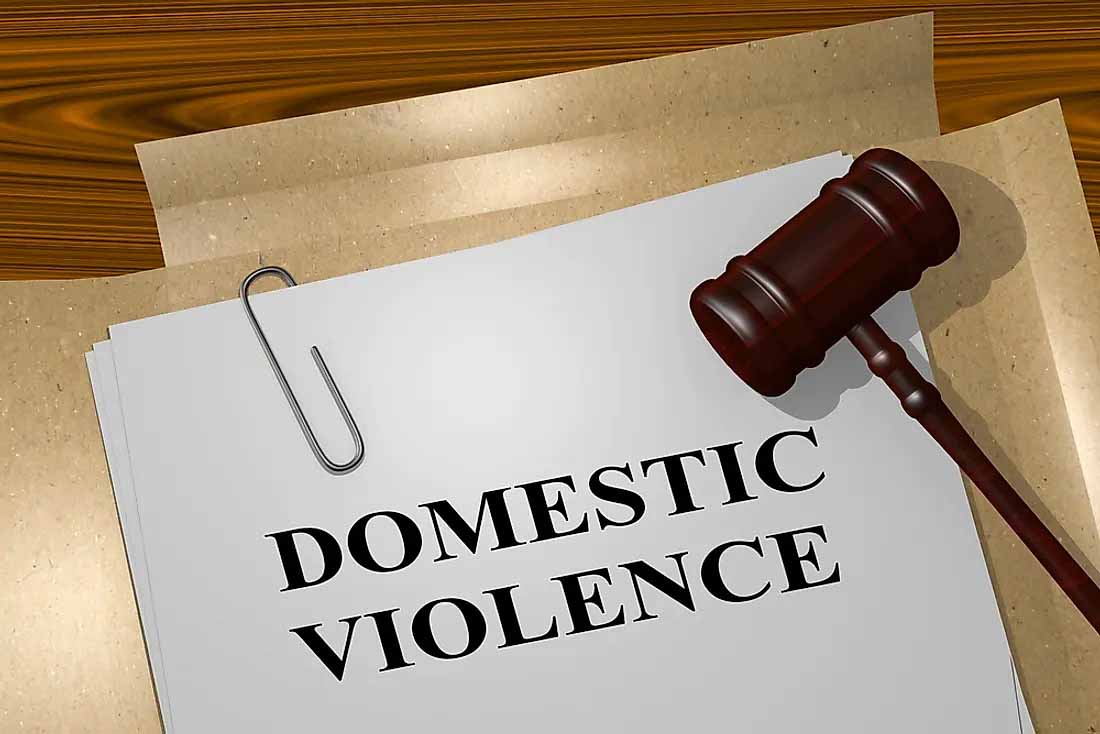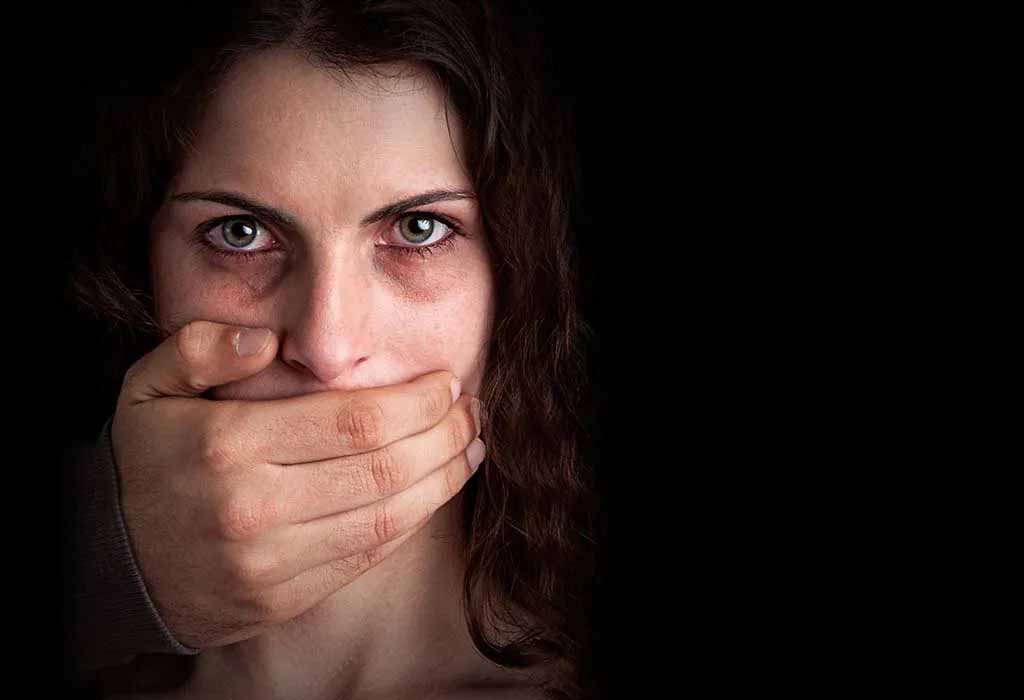What Is The Definition Of Domestic Violence?

Domestic violence can happen in many forms and sadly, some victims don’t realize they are being abused. Knowing what counts as domestic violence can help you or your loved one recognize abusive behaviors in your relationships.
Domestic violence refers to a pattern of abusive behaviors that occur within a close relationship, typically involving intimate partners or family members.
It encompasses a range of harmful actions aimed at exerting power and control over the victim, often resulting in physical, emotional, psychological, or financial harm.
These abusive behaviors can manifest as physical violence, such as hitting or punching, but they can also take the form of emotional manipulation, verbal threats, isolation, and economic coercion.
According to Axelrod & Associates, domestic violence is not limited to a specific gender, age group, or socioeconomic background. It can affect anyone regardless of their demographic characteristics.
Addressing domestic violence requires a comprehensive approach involving legal intervention, support services for victims, and initiatives aimed at raising awareness and promoting healthy relationships.
Types of Domestic Violence
As mentioned, domestic violence encompasses various types of abusive behaviors that can inflict harm on victims physically, emotionally, psychologically, or financially.
Physical abuse involves acts of bodily harm, such as hitting, punching, and choking.
Emotional and psychological abuse includes manipulation, humiliation, and constant belittling, aimed at undermining the victim’s self-esteem and well-being.
Sexual abuse involves coerced or non-consensual sexual acts, violating the victim’s autonomy.
Financial abuse comprises controlling or restricting access to financial resources, impeding the victim’s ability to make independent decisions.
There’s also verbal abuse, which involves constant criticism, threats, and derogatory language.
Social isolation, where the perpetrator restricts the victim’s contact with friends and family, is another form.
Recognizing the multitude of domestic violence types is crucial for effectively addressing and preventing such harmful behaviors.
Signs and Symptoms of Domestic Violence
Recognizing signs and symptoms of domestic violence is crucial for identifying and supporting potential victims.
Physical indicators include unexplained injuries, bruises, or frequent visits to healthcare providers while emotional signs may manifest as low self-esteem, anxiety, depression, and withdrawal from social activities.
Victims of domestic violence often display fearful or anxious behavior around their partner, aiming to appease them. Drastic changes in behavior, such as a once-outgoing individual becoming isolated, can be telling.
Financial control by the abuser might be evident if the victim lacks access to money or resources. Constant phone calls or text messages from the partner, even in the presence of others, can indicate possessiveness and control.
Friends and family noticing these signs should approach the situation with sensitivity, offering support and resources to help the victim safely escape the abusive relationship.
Effects of Domestic Violence on Victims
The effects of domestic violence on victims are profound and far-reaching, permeating the physical, emotional, psychological, and social aspects of their lives.
The constant fear and trauma associated with domestic violence can cause ongoing psychological distress, often leading to post-traumatic stress disorder (PTSD).
These experiences can also sever social connections as abusers may isolate victims from friends and family, leaving them with a sense of helplessness and loneliness.
In cases involving children, they can be deeply affected by witnessing violence between parents, leading to developmental and behavioral issues.
Addressing the effects of domestic violence requires not only physical safety but also comprehensive support systems, including therapy, counseling, and access to resources that facilitate healing and recovery.
Cycle of Domestic Violence
The cycle of domestic violence, often referred to as the “cycle of abuse,” describes the repetitive pattern that characterizes many abusive relationships.
It typically consists of three main phases: the tension-building phase, the acute abuse phase, and the honeymoon phase. In the tension-building phase, minor conflicts and arguments escalate, creating a sense of unease and anxiety.
This tension eventually culminates in the acute abuse phase, marked by an explosion of violence or aggressive behavior, where the abuser exerts control and inflicts harm on the victim.
Following this phase is the honeymoon phase, where the abuser displays remorse, apologizes, and may offer gifts or promises to change.
This period often fosters hope for positive change, leading the victim to believe that the relationship can improve. However, the cycle then repeats itself as tension begins to build again.
This cyclical pattern can trap victims in a cycle of manipulation, making it difficult for them to break free from the abusive relationship.
Domestic Violence Laws and Legislation
Domestic violence laws and legislation are crucial components of legal frameworks aimed at protecting individuals from abusive relationships and ensuring accountability for perpetrators.
These laws vary by jurisdiction but generally encompass provisions such as restraining orders, which legally prevent abusers from contacting or approaching victims, and mandatory arrest policies that require law enforcement to intervene in cases of suspected domestic violence.
Legislation often covers a wide spectrum of abusive behaviors, including physical violence, emotional abuse, sexual assault, and economic coercion.
Many legal systems have evolved to recognize the complexities of domestic violence, offering specialized courts or divisions that handle these cases sensitively and effectively.
These laws not only provide safeguards for victims but also underscore society’s commitment to eradicating domestic violence and fostering environments of safety and respect.
Resources for Domestic Violence Victims
Resources for domestic violence victims play a pivotal role in providing crucial support and assistance to individuals seeking to escape abusive relationships.
Shelters and safe houses offer a refuge from danger, providing temporary housing, emotional support, and access to basic necessities.
Hotlines and crisis centers provide immediate help, allowing victims to speak to trained professionals who can offer guidance, resources, and a listening ear.
Counseling services and support groups offer therapeutic assistance for healing from trauma, while legal aid organizations assist with navigating the legal system, including obtaining restraining orders and pursuing legal action against abusers.
Community organizations and NGOs often collaborate to offer comprehensive assistance, from financial aid to helping victims secure housing and employment.
These resources collectively form a lifeline for victims, empowering them to break free from abusive situations and rebuild their lives.
Domestic Violence Prevention and Intervention
Domestic violence prevention and intervention strategies are essential components in addressing this issue.
Prevention efforts focus on raising awareness about healthy relationship dynamics, consent, and communication through educational programs in schools, workplaces, and communities.
Early identification and intervention are crucial; healthcare providers, teachers, and neighbors can play pivotal roles in recognizing signs of abuse and offering support.
Effective intervention involves a multi-faceted approach, including immediate protection for victims, legal measures like restraining orders, and counseling services.
Perpetrator rehabilitation programs also seek to address the root causes of abusive behavior and promote lasting change.
By fostering a culture of respect, gender equality, and open dialogue, societies can work towards breaking the cycle of domestic violence and creating safer environments for everyone.
Conclusion
Domestic violence is a deeply concerning issue that transcends borders, cultures, and socioeconomic backgrounds.
Its far-reaching impact on individuals, families, and communities necessitates a multi-faceted approach involving prevention, intervention, legal measures, and comprehensive support systems.
By raising awareness about the various types and signs of domestic violence and providing resources for victims and survivors, we can work collectively to break the cycle of abuse.
If you or your loved one is experiencing any of the mentioned types of abuse, don’t hesitate to reach out to a divorce lawyer who can help you deal with your abuser.



